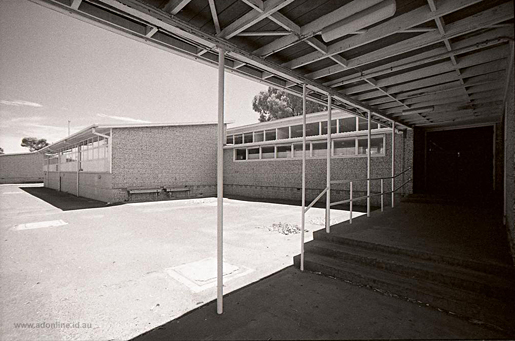Lessons from Mowbray College
Should the Victorian Government have given $1.4 million to Mowbray College after it went into voluntary administration?
On Thursday, an estimated 10,000 state school teachers marched on State Parliament as part of a campaign for better pay and conditions. Whether their demand for more than a 2.5% pay rise is accepted by the State Government or not, there are some fundamental problems with the way that state education is funded in Victoria.
A quick stroll through your local primary school or secondary college will probably reveal that to you.

For whilst there may be some dispute about whether Victorian teachers should be the “best paid in Australia” or not, there is also a critical problem with the infrastructure at many of our public schools. The problem, of course, is funding from the State Government.
This week, Mowbray College, a private school in Melbourne’s outer-western suburbs was placed into voluntary administration after it was revealed that the school had a debt of $18 million. The Victorian Registration and Qualifications Authority (VRQA) have been investigating the school, which the administrators have decided to close permanently. Students studying for the Victorian Certificate of Education (VCE) in Years 11 and 12 will be permitted to continue at the school until the end of the term, thanks to a $1.4 million financial grant provided by the State Government.
Whilst I believe that it is important to assist VCE students, I was somewhat appalled that the State Government could so-easily find $1.4 million to reward bad financial management at a collapsed private school whilst many of the state’s own schools remain in a deplorable condition.
A good example is that of Greensborough Secondary College in Melbourne’s north-east, which was opened in 1958 as the Watsonia Technical School. Constructed in the Light Timber Construction (LTC) style, the school has been neglected for decades to the extent that the antiquated heating system has routinely failed in the past two winters.
To prevent students from freezing in class, the school council was forced to pass a resolution in 2011 to allow students to wear blankets just to keep warm. This deplorable situation was reluctantly addressed with a paltry $171,945 from the government to upgrade the school’s electrics. Nothing more has been provided to upgrade facilities, let alone replace the crumbling LTC buildings.
A look at the college’s 2011 Annual Report on the VRQA website shows that the school’s entire funding from the Department of Education for 2010-11 was just $871,146. That money is used to fund building maintenance, educational programmes, books and publications, professional development, equipment, some salaries and all the other normal requirements of a high school. The school has an enrolment of approximately 1000 students.
According to Mowbray’s annual report, that school had a combined enrolment in 2010-11 of about 1,500 and total assets of $46.4 million. We don’t know how much government money the school received under its normal funding arrangements as these details are not specified in the school’s minimalist report.
I suspect that with such plentiful assets, diverting the newly-found $1.4 million to a state secondary college probably would have delivered a much bigger return-on-investment for the taxpayer.
School funding, as it currently exists, is a mess. Whist government schools are the primary responsibility of the states, funding is mixed between the Commonwealth and State governments. Nevertheless, the Gonski Review of Funding for Schooling claimed that total combined government funding per student for private schools rose by 82% between 2001-02 and 2008-09. This compares to a 48% increase for government schools. Last year, the State Government cut state school funding by $490 million. According to the Australian Bureau of Statistics, 67.1% of students attend government schools.
The disparity is obvious and the priority of government is clear.
Those who criticise government funding for non-government schools are inevitably accused of engaging in “class warfare“, itself an antiquated concept. Nevertheless, I cannot help but feel that in an era where money is becoming tight that state schools should take priority over private ones.
The teachers’ union is primarily campaigning over wages, but they are also concerned about working conditions. Most teachers are genuinely concerned about the academic welfare of their pupils. Teachers recognise that crumbling infrastructure is not conducive to learning. This is not a recent concern, either.
Parents who send their children to private schools make a choice. It isn’t a right.
Whilst I believe that the Mowbray VCE students do need to be supported in the short-term, I also believe that the government’s priority should be funding the state school system first and foremost. After all, education is one of the primary responsibilities of a state government.
Comments
One response to “Lessons from Mowbray College”
Hello, Good story, yes i attended Mowbray and sadly had to move.